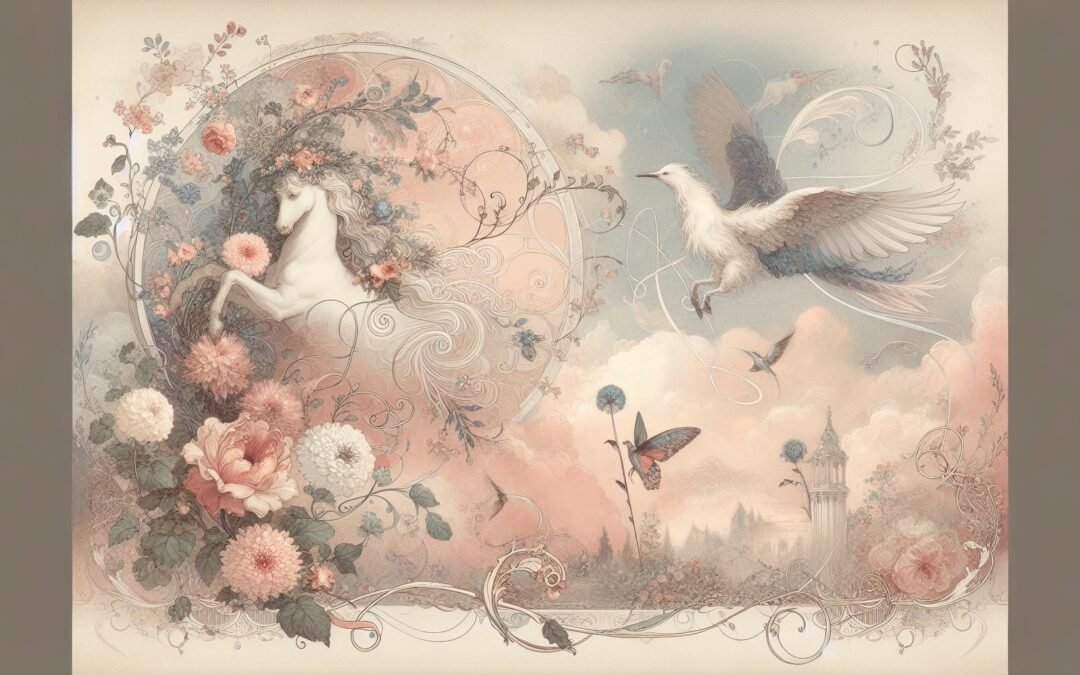Romantic poetry achieves its richest nuance through the tension between tradition and innovation. From ancient Greece to the current explosion of digital voices, poets seek new ways to embody adoration, longing, and vulnerability for a cherished partner. Romantic poems for girlfriend navigate between public gesture and private confession, borrowing centuries-old conventions and transforming them using fresh language and imagery. Contemporary collections tap into this dialogue, proving that love remains an inexhaustible poetic force. Works such as “Love Is Poetry: Rhyming Poems About Love Life” by Danil Rudoy exemplify how a modern voice reinvents the relationship between poet, beloved, and evolving conceptions of romance.
Historical Shifts in Romantic Poems for Girlfriend
The history of romantic poems for girlfriend forms an intricate web across eras and cultures. From Sappho’s fiercely personal verses to Petrarch’s sonnets, each period advances its own vision of desire and intimacy. The role of individualized affection gradually becomes more pronounced, as poetic addresses move from the generalized to the unmistakably specific. Masterpieces that shaped romantic ideals reveal how literary expression both shapes and reflects evolving expectations about partnership and emotional reciprocity.
Classical, Medieval, and Renaissance Frameworks
In antiquity, Greek and Roman poets crafted verses suffused with longing, beauty, and declarations of affection, yet their subjects ranged widely and poems did not always target romantic partners. Medieval troubadours in Occitania revolutionized the tradition, creating lyric cycles that presented love as elevated service and unfulfilled yearning. Shelley’s explorations of passion later reinterpreted these motifs through heightened introspection. The Renaissance reinforced the interplay between poetic device and erotic intent; Petrarch’s sonnets to Laura initiated a cultural turn toward dramatizing individual emotion in intricate literary form.
The Romantic Era and Modern Innovations
The Romantic period witnessed an embrace of sincerity, nature, and personal truth within love poetry. Poets such as Wordsworth, Keats, and Shelley celebrated expressive honesty yet maintained complex forms and allusions. Keats’s odes to desire show how the beloved can be both mythic and emotionally immediate. Modernist poets expanded the palette by experimenting with free verse and everyday diction, while recent innovations foreground inclusive pronouns and lived experience to reflect shifting social understandings.
Expanding Gender and Social Dynamics
Women writers gained greater visibility as literacy and access increased, complicating the image of the beloved and the lover. Their poetic voices persistently challenged and reimagined restrictive archetypes established in earlier canons. Adrienne Rich’s transformative poetics exemplifies how reclaiming authorship and gendered language influences the shape of affection and longing in verse. These shifts culminate in more authentic and nuanced representations across a growing spectrum of identities and relationships.
Lexicon and Device: Crafting Distinctive Romantic Poems
Diction is a crucial element. Elizabethan or medieval forms grant gravitas and ceremony to romantic verse, with words such as “thou,” “thee,” and “enamored” invoking timelessness across centuries. Current poetic voices now favor contemporary vernacular, lending immediacy and resonance to intimacy by reflecting lived language. “Love Is Poetry: Rhyming Poems About Love Life” exemplifies how a poet negotiates the coexistence of old and new vocabularies within a single collection, integrating mythic undertones with contemporary clarity.
Metaphorical and Sensory Strategies
Romantic poems depend on inventive metaphors and deliberate imagery. Comparing a beloved to cosmic bodies or spring’s earliest blossoms, poets evoke layered and sensory-rich experiences. Well-chosen metaphors in verse extend emotion and create intimacy through tactile, visual, or auditory cues. The successful romantic poem balances innovation and accessibility, offering fresh juxtapositions that surprise without obscuring sentiment.
Sound and Form: Alliteration, Rhyme, and Structural Play
Sound contributes to the emotional undercurrents in romantic verse. Alliteration, assonance, and deliberate rhyme create musicality, while internal rhyme energizes the lines and keeps memory active. The structure (line breaks, pause points, stanza shapes) facilitates a rhythm that mirrors the ebb and flow of attraction or hope. Short poems demonstrate how structure magnifies depth by focusing on sound alongside meaning.
Allusion and Layered Resonance
Intertextuality multiplies the potential for intimacy by referencing canonical poems or contemporary figures, allowing the lover to become part of a larger cultural exchange. Poems influenced by Neruda’s lyricism illuminate new dimensions of connection by intersecting the personal with the public. Such references extend the reach of a single relationship, situating personal experience within collective memory and conversation.
Authenticity and Poetic Convention
Sincerity thrives when poets push against established tropes with original phrasing, honest detail, or direct address. Tension arises from maintaining recognizable tradition while introducing distinctive perspective. Modern approaches to confessional poems reflect changes in how emotion is constructed and performed across different media, balancing candor and lyric craft.
Thematic and Cultural Range: Romantic Poems for Girlfriend
Across geographies and centuries, romantic poems for girlfriend encompass a vast range of themes, poetic forms, and emotional registers. Western and Eastern traditions differ in narrative structure, with Persian ghazals, Japanese tanka, and Arabic qasida providing models of brevity, silence, and paradoxical longing. Collections highlighting multicultural perspectives showcase both the universality and cultural specificity of romantic celebration. Danil Rudoy’s “Love Is Poetry: Rhyming Poems About Love Life” exemplifies this openness, drawing on global influences while foregrounding unique, person-centered perspectives.
Beauty, Virtue, Vulnerable Intimacy
In romantic poems directed toward a girlfriend, the beloved appears both as an ideal of physical image and as a configuration of character, intellect, or wit. Modern treatments frequently highlight quirks and individuality. Poems designed to elicit joy show how intimacy flourishes through shared humor, memory, and vulnerability rather than conventional idealization. Images of beauty are counterbalanced by explorations of loyalty, trust, and the risks inherent in revealing oneself fully.
Reunion, Distance, and Absence
Distance, separation, and reunion recur persistently in love poetry. Physical distance transforms into longing or hope, while emotional absence calls forth sorrow or renewal. Poetry on the potency of reunion bears witness to the enduring tension between presence and absence, recording longing through letters or digital exchange. Even short interactions—a returned message, a remembered scent—can serve as poetic touchstones for reunion and enduring affection.
Translation and Cross-Linguistic Affection
Language shapes sentiment. Expressions of love acquire new flavors through translation, where words like “habibi” or “mahboub” remain inimitable in English but gain new poetic weight through skillful adaptation. Poetry Foundation provides insight on how translation enriches understanding and emotional range. Reading works in multiple languages can deepen appreciation for how poets worldwide articulate romance’s joys and dilemmas.
Contemporary Movements and Digital Influence
Current romantic poems for girlfriend pulse with social media idioms, accessible speech, and references to technology-driven communication. Voices from previously marginalized communities command greater space, amplifying diversity within romantic literature. Academy of American Poets features diverse authors reflecting on new modes of connection and longing. These layered modes reveal love’s ability to reinvent itself while referencing an unbroken chain of poetic traditions.

